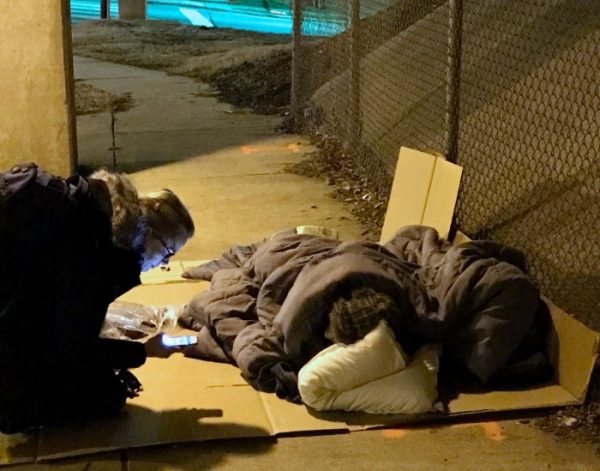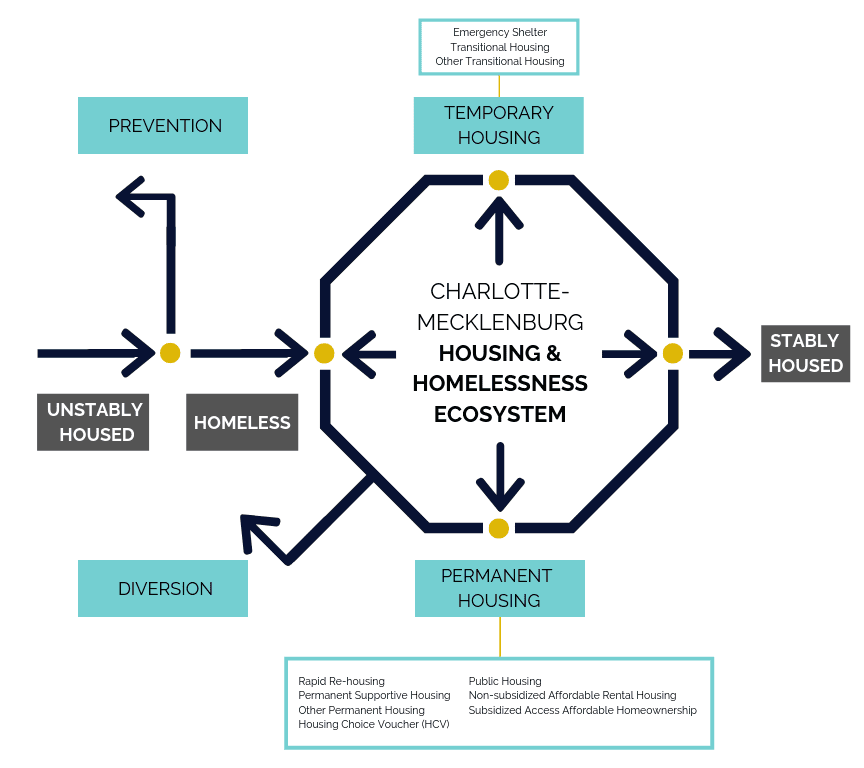Mapping the housing and homelessness ecosystem

Mecklenburg County Community Support Services, in partnership with UNC Charlotte Urban Institute, last week released the Housing & Homelessness Ecosystem of community providers in Charlotte and Mecklenburg County.
The Ecosystem is one part of a multi-step process in creating a culture of continuous improvement. To read more about why an Ecosystem matters for Charlotte-Mecklenburg, and about how definitions are organized, check out the last two posts on the Building Bridges Blog.
This post highlights the main components of the Ecosystem and suggests ways to use the information. The Ecosystem is not a static document; rather it is a dynamic site contained within the Dashboard that will be updated annually.

A flow chart of the Mecklenburg County Housing & Homelessness Ecosystem. Mecklenburg County.
System View
The Ecosystem allows the community to see the full housing and homelessness system as well as the separate parts and how they relate to each other. Arrows depict the flow into and out of the four main categories of housing interventions: prevention, diversion, temporary housing, and permanent housing. Together, these interventions address housing instability and homelessness. An effective and efficient system must consider prevention assistance in relationship to other housing interventions, like permanent housing, and vice versa. Determining the “right” number of emergency shelter beds in a community must be viewed within the larger context of the system.
“Unstably housed,” “homeless,” and “stably housed” are terms used to describe housing states. They are included on the Ecosystem diagram relative to the category of housing interventions targeting them. For example, prevention is connected to housing instability.
However, it is important to note that this is not a linear process. A household may teeter on the edge of housing instability and homelessness for a long time; and some households who move from homelessness to housing stability may return one or even multiple times. Seeing the full system allows the community to better understand such patterns and identify areas for intervention. To download and print the Ecosystem Diagram with terms and definitions on the back, please click here.
Organizations & Searchable Table
The Ecosystem has specific pages for each housing and homeless service organization in Charlotte-Mecklenburg; the information is displayed via Tableau. (To read more about the process to develop the Ecosystem click here